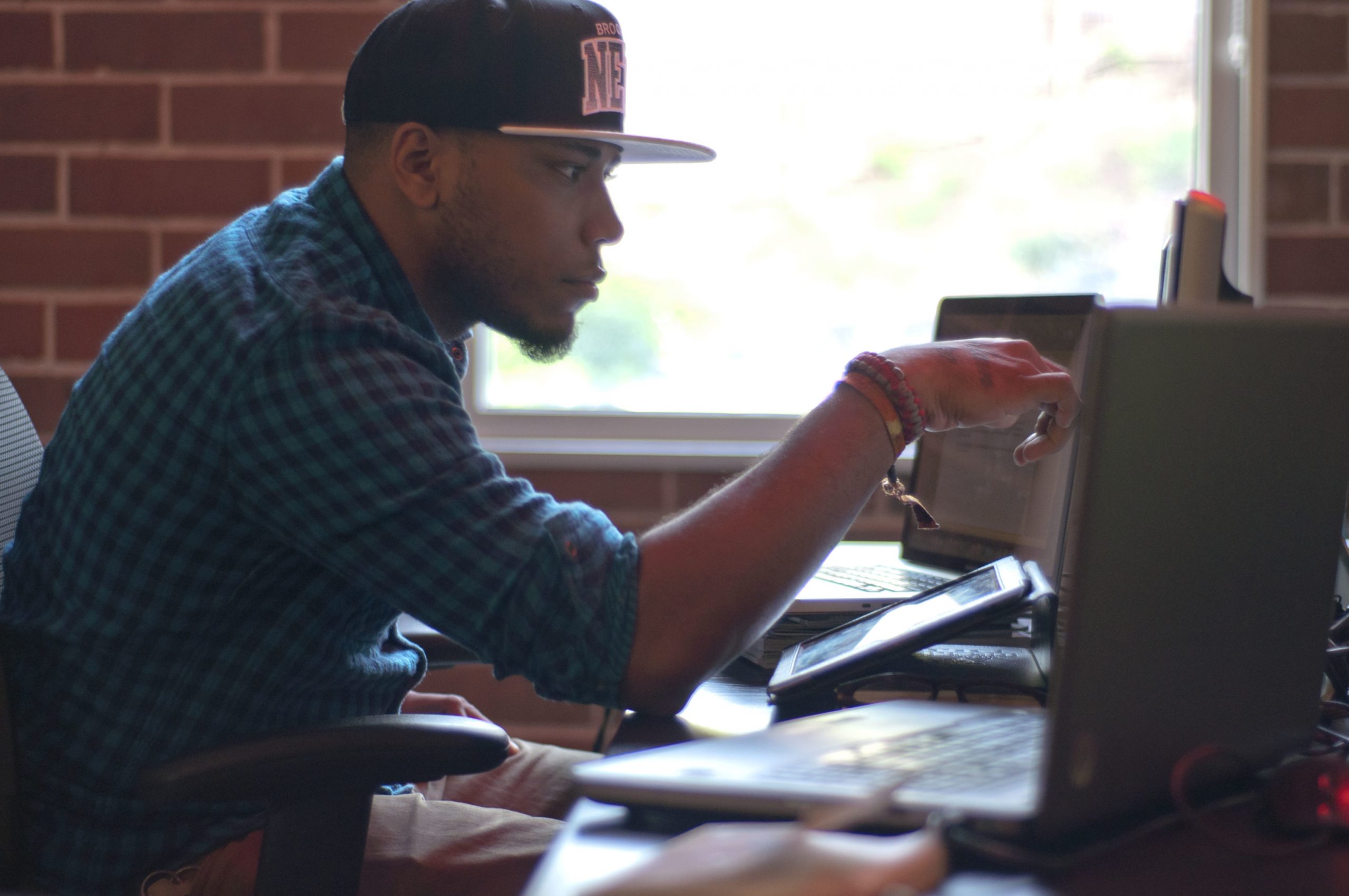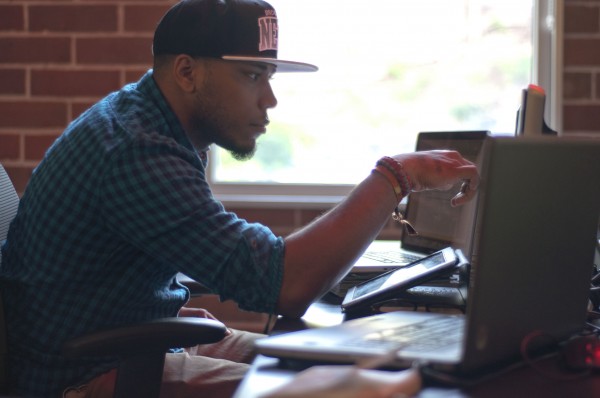
A few miles west of Georgia State in a street just off Howell Mill is a medium-sized office complex hung with big, brown and bold letters on the outside known as Strongbox West.
Packed with web developers, startup entrepreneurs and freelancers of every stripe, the inside of Strongbox looks exactly how you might picture an office environment in Palo Alto, California.
From the glass front to patio out back, the space is filled with savvy-looking technologists spread out over a vast space of couches and tables, butting up against a community-style kitchen and patio space with everything from old-school arcade games to free coffee.
The design of the building is supposed to inspire a sense of collaboration and community, and coincidentally that’s also what student Jovonni Pharr, the creator of Sayroom, is looking to stimulate with the newly launched social media application for iOS devices.

“You never know who’s listening”
The concept for SayRoom began a little over a year ago when Jovonni first began to seriously pursue his future as a computer programmer.
Last year, before a packed crowd at Infinite Appeal’s annual fashion show in the Georgia State University Sports Arena, Jovonni was invited to speak about his vision for the new smartphone application, which he was just then starting to develop.
Designed to allow users to voice their own spontaneous, emotional reactions anonymously about all kinds of online media to anyone willing to listen, Sayroom is supposed to offer what most social apps don’t: the power of voice.
In 10 seconds or less, Sayroom is supposed to capture the “genuine reactions” users have to popular pictures on other social networks like Instagram, Tumblr or Pinterest compiled together in a sliding interface.
“It’s designed to document raw, emotional reactions to different kinds of stimuli – so whether it’s a video, a pair of shoes at the mall, whether it’s a TV shows – it’s designed to document that,” Jovonni said.
While pitching the basic concept of the app at the fashion show, others in the crowd were closely paying attention. And, like that, one thing led to another and Jovonni was eventually introduced to and would get a job working with Iziah Reid, owner of Nuracode with its offices at Strongbox.
“I thought that the concept was interesting, and I wanted to hear more about it,” said Reid.
After taking a look at the app in its early stages, Reid decided to lend his support to the project. “We just got to work … and things really just fell into place,” Reid said.
He said because Jovonni had some difficulties at first translating his ideas into usable code, he was able to help the young computer information systems major develop the application, becoming somewhat of a mentor to him in many respects as Sayroom took shape
Over time, Jovonni began working with the guys at Nuracode on other projects for clients like AARP and Samsung, honing his skills while simultaneously working on his app, according to Pharr.
So, after nearly two years of development and a few pre-launch approval hiccups from Apple, Jovonni and the team at Nurocode released SayRoom June 3.
After its first week on the App Store, Sayroom already has more than 250 downloads.
Back at Strongbox, Jovonni says he’s already looking to improve the basic feature set of Sayroom, including adding support for location-based functionality and commercial programs for brands possibly in the near future.
That way, not only will users be able to comment on things like images on Instagram but also check-ins from their friends in nearby places and be rewarded with discounts or other incentives for talking about a certain brand.
Ultimately, though, with the launch of the app, the goal is getting as many people as possible to download the app and share it with their friends, he says.
“Our goal is to make people comfortable with saying how they feel,” he said. “Period.”
Users may feel more secure using the app because, unlike text- or image-based social networks, it’s much harder to spam accounts when the messages themselves rely on the actual spoken word.
“There’s a sense of authenticity in that voice itself,” he said, “because someone is always talking.”
Still, anonymity is another major feature that SayRoom offers to make its service more appealing, meaning that as long as no one recognizes the voice on the other end of the speaker, people can talk freely with little fear of others.
Defying stereotypes

At 24, Jovonni Pharr blows the traditional stereotype of computer programmers out of the water.
In a field historically held by white guys, he’s black, for starters – and he has an urban sensability that you certainly won’t find much outside the perimeter.
For example, while also developing SayRoom, Jovonni has built a sizeable following online as a D.J. by blending popular hip-hop songs with dubstep dance tracks, which he like to call “dopestep.”
In fact, in that past two years, he’s played both major festivals like Camp Bisco with the likes of artists like Skrillex and Wiz Kalifa and frequents local venues like The Quad in Midtown.
Even though his music career is, admittedly, something of a side project, he already has over 6,000 followers on Twitter and more than 15,500 followers on Facebook.
In fact, he says, sometimes it doesn’t seem real to him. To remind him of how far he’s come, he still wears his VIP bracelet from Bisco last year, never taking it off, not even to shower.
Rather, he prefers to spend his time on something he thinks will take him even further: software development.
Editor’s note: Jovonni Pharr is currently working on an interactive app on behalf of The Signal, designed for iOS products with an expected launch date of late summer to early fall 2013.

